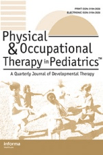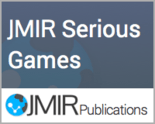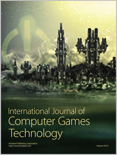
Games for Health Journal
Scope & Guideline
Pioneering research at the crossroads of gaming and health.
Introduction
Aims and Scopes
- Health Promotion through Gaming:
Research on how games can motivate users to adopt healthier lifestyles, including physical activity and mental wellness. - Rehabilitation and Therapy:
Studies that evaluate the effectiveness of game-based interventions in rehabilitation settings, particularly for patients recovering from injuries or managing chronic conditions. - Cognitive and Emotional Health:
Exploration of the impact of games on cognitive functions, mental health issues, and emotional regulation in various populations, including children, the elderly, and those with disabilities. - Technological Innovations in Gaming:
Investigations into the use of advanced technologies, such as virtual reality and augmented reality, to enhance the therapeutic effects of games. - Social Interaction and Engagement:
Examination of how games can foster social connections and community engagement, especially among vulnerable populations like the elderly or those with disabilities.
Trending and Emerging
- Virtual Reality Applications:
An increasing number of studies are exploring the use of virtual reality (VR) for therapeutic interventions, indicating its growing importance in rehabilitation and mental health treatment. - Gamification in Healthcare:
Research on the application of gamification techniques in healthcare settings is on the rise, showcasing how game design elements can enhance patient engagement and motivation. - Exergaming for Physical Health:
The trend toward exergaming—combining physical exercise with gaming—has gained traction, especially in promoting physical activity among various age groups and populations. - Mental Health Gaming Interventions:
There is a notable increase in the exploration of games specifically designed to address mental health issues, reflecting a growing recognition of their potential therapeutic benefits. - Community and Social Games:
Emerging studies are focusing on games that promote social interaction and community building, particularly among the elderly and marginalized groups, indicating a shift towards addressing social well-being through gaming.
Declining or Waning
- Traditional Gaming Interventions:
There appears to be a decline in studies focusing solely on traditional gaming methods without incorporating innovative technologies such as VR or AR, as newer methods are favored for their enhanced engagement and effectiveness. - Non-Interactive Digital Games:
Research on non-interactive digital games has waned, possibly due to a shift toward more interactive and immersive experiences that better engage users in health-related behaviors. - Generalized Health Games:
The focus has shifted from generalized health games to more targeted interventions addressing specific health issues, indicating a move toward precision in health gaming research.
Similar Journals

Health Promotion Journal of Australia
Elevating health promotion discourse to new heights.The Health Promotion Journal of Australia, published by Wiley, is a premier journal dedicated to advancing the field of health promotion and public health. With its ISSN 1036-1073 and E-ISSN 2201-1617, this journal has served as a vital resource for researchers, practitioners, and students in Australia and beyond since its inception in 2002. Currently holding a commendable Q2 ranking in both the Community and Home Care and Public Health, Environmental and Occupational Health categories (2023), it is recognized for its contribution to critical discussions and innovative solutions in health promotion. The journal offers valuable insights and data, drawn from a diverse array of research articles, reviews, and case studies that address pressing issues in the field. With a focus on practical applications and evidence-based practices, the Health Promotion Journal of Australia aims to foster collaboration and knowledge exchange among health professionals and researchers, making it an essential reading for anyone committed to improving public health outcomes.

Multimodal Technologies and Interaction
Enhancing Interaction Through Innovative Research.Multimodal Technologies and Interaction, published by MDPI since 2017, is an esteemed open-access journal based in Switzerland, dedicated to the exploration and advancement of innovative multimodal systems that enhance user experience across various digital platforms. With its commitment to disseminating high-quality research in diverse areas such as Computer Networks and Communications, Human-Computer Interaction, and Neuroscience, the journal has rapidly established itself within the academic community, achieving a commendable position in Scopus rankings including Q2 in both Computer Networks and Communications and Computer Science Applications. As an essential resource for researchers, professionals, and students alike, Multimodal Technologies and Interaction fosters interdisciplinary dialogue and supports the development of cutting-edge technologies, ensuring that advancements in multimodal interaction are accessible to a global audience. Scholars can benefit from its Open Access format, allowing unrestricted access to influential studies that shape the future of technology and interaction design.

Acta Gymnica
Transforming insights into impactful therapeutic solutions.Acta Gymnica is a pivotal open-access journal dedicated to the realms of Physical Therapy, Sports Therapy, and Rehabilitation, aiming to promote knowledge dissemination and research excellence since its establishment in 2014. Published by the esteemed University Palackého in Olomouc, Faculty of Physical Culture in the Czech Republic, this journal provides a valuable platform for researchers, practitioners, and students to share innovative findings and advances in these dynamic fields. With an impressive Scopus ranking placing it within the 45th percentile and categorized as Q3 in 2023, Acta Gymnica serves as an essential resource for those seeking to stay at the forefront of therapeutic and rehabilitative practices. Accessible to all through its open-access model, the journal encourages a broad engagement with current research, fostering collaboration and knowledge-sharing among the global community of health professionals.

PHYSICAL & OCCUPATIONAL THERAPY IN PEDIATRICS
Exploring the forefront of physical and occupational therapy for children.PHYSICAL & OCCUPATIONAL THERAPY IN PEDIATRICS is a leading academic journal published by Taylor & Francis Inc, focusing on the dynamic fields of pediatric therapy and rehabilitation. With a distinguished history spanning from 1981 to 2024, this journal provides researchers, practitioners, and students with critical insights and advancements in physical and occupational therapy tailored to the unique needs of children. Renowned for its high impact factor and strong rankings, including Q1 in Occupational Therapy and impressive placements in related health categories, it serves as a vital resource for evidence-based practices. Although it operates on a subscription basis, the journal's commitment to advancing knowledge in rehabilitation methods promotes improved health outcomes for children, making it indispensable for professionals dedicated to pediatric care and therapy.

AMERICAN JOURNAL OF PHYSICAL MEDICINE & REHABILITATION
Advancing Rehabilitation Science for Better Patient OutcomesAmerican Journal of Physical Medicine & Rehabilitation, published by Lippincott Williams & Wilkins, is a leading journal in the field of rehabilitation, dedicated to advancing knowledge in physical medicine and rehabilitation practices. With an established history from 1988 to 2024, this journal serves as a vital resource for clinicians, researchers, and students interested in the multifaceted aspects of rehabilitation science. It holds a commendable Q2 ranking in the Physical Therapy and Sports Therapy fields and a prestigious Q1 position in Rehabilitation, reflecting its impact and relevance in the academic community. The journal's Scopus rankings further highlight its significance, placing it among the top percentile for both rehabilitation medicine and physical therapy. Although it does not currently offer open access options, its accessibility through institutional subscriptions ensures widespread reach. By publishing high-quality research, clinical studies, and reviews, the American Journal of Physical Medicine & Rehabilitation plays a critical role in shaping contemporary rehabilitation practices and improving patient outcomes.

Annals of Rehabilitation Medicine-ARM
Advancing Rehabilitation Science for a Healthier TomorrowAnnals of Rehabilitation Medicine (ARM), published by the Korean Academy of Rehabilitation Medicine, is a distinguished open-access journal dedicated to advancing the field of rehabilitation medicine since its inception in 1977. With its E-ISSN 2234-0653, ARM aims to disseminate high-quality, peer-reviewed research that reflects both the breadth and depth of rehabilitation practices. As of 2023, the journal ranks in the Q2 quartile within the Rehabilitation category, placing it among the top half of journals in this domain, and it holds a respectable position in the Scopus rankings, being 70th out of 161 in the discipline. This journal emphasizes the importance of innovative research and clinical practices that improve patient outcomes in rehabilitation settings. Researchers, clinicians, and students alike will find valuable insights and the latest developments in rehabilitation science, enhancing their understanding and practice through its accessible content.

Translational Journal of the American College of Sports Medicine
Advancing Sports Medicine through Research and Practice.Translational Journal of the American College of Sports Medicine is a pivotal publication dedicated to advancing the field of sports medicine and rehabilitation. Published by LIPPINCOTT WILLIAMS & WILKINS, this journal serves as an essential platform for researchers, practitioners, and students keen on the latest innovative research and clinical practices. With a particular focus on orthopedics and sports therapy, this journal aims to bridge the gap between research and practical application, promoting improved patient outcomes in physical therapy and rehabilitation settings. The journal positions itself as a thought leader within its field, evidenced by its respectable Q2 quartile ranking in Physical Therapy and Rehabilitation and Q3 ranking in Orthopedics and Sports Medicine as of 2023. Although not an open-access publication, the journal remains committed to disseminating high-quality, peer-reviewed articles that inspire new methodologies and evidence-based practices. Historically converging from 2021 to 2024, the journal continues to garner attention in both the academic community and clinical practice, highlighting its significance as a resource for contemporary sports medicine. Researchers are encouraged to submit their work to contribute to this vibrant and growing area of study.

JOURNAL OF SCIENCE AND MEDICINE IN SPORT
Elevating the standards of sports medicine and therapy.JOURNAL OF SCIENCE AND MEDICINE IN SPORT, published by Elsevier Science Ltd, is a premier academic journal based in the Netherlands that serves as a vital platform for disseminating cutting-edge research in the fields of sports medicine, orthopedics, and physical therapy. With an impressive Q1 categorization in Orthopedics and Sports Medicine, Physical Therapy, and Sports Science, this journal is recognized for its high-impact contributions and currently holds a significant rank in Scopus, positioned at #17 in Physical Therapy and #25 in Orthopedics. Spanning from 1998 to 2024, it provides scholars with rigorous peer-reviewed articles aimed at enhancing knowledge, practice, and research in sports and medicine. Although it does not offer open access, the journal remains essential for professionals, researchers, and students looking to stay ahead in these dynamic disciplines. By focusing on evidence-based practices and innovative methodologies, the JOURNAL OF SCIENCE AND MEDICINE IN SPORT continues to play a pivotal role in advancing the scientific understanding of health and performance in sports.

JMIR Serious Games
Elevating Rehabilitation and Wellness Through Serious GamesJMIR Serious Games is a leading open-access journal published by JMIR PUBLICATIONS, INC, dedicated to disseminating high-quality research in the emerging field of serious games for health. Since its establishment in 2013, the journal has positioned itself at the forefront of innovative strategies using game technology to improve health outcomes, rehabilitation, and mental health treatment. With a commendable impact factor and a prestigious Q1 ranking in Biomedical Engineering, Physical Therapy, and Rehabilitation for 2023, JMIR Serious Games stands out as a crucial resource for professionals and researchers aiming to explore the intersection of gaming and health sciences. The journal fosters a collaborative environment that encourages the sharing of cutting-edge research findings and applications, making it an essential reference for academics, practitioners, and students interested in harnessing the potential of serious games to transform healthcare practices.

International Journal of Computer Games Technology
Bridging Academia and Practice in GamingInternational Journal of Computer Games Technology, an esteemed publication from HINDAWI LTD, serves as a pivotal platform for scholars and practitioners in the realms of computer graphics, software, and human-computer interaction. Since its inception in 2008 as an open-access journal, it has committed to disseminating cutting-edge research and innovative practices within the gaming technology sector. The journal, identified by its ISSN 1687-7047 and E-ISSN 1687-7055, is based in the United States and boasts a converged publication timeline from 2009 to 2024. Recognized in the 2023 Category Quartiles for its contributions to notable fields, it ranks Q3 in Computer Graphics and Computer-Aided Design, Q4 in Human-Computer Interaction, and Q3 in Software. With its active presence in Scopus rankings, the journal holds commendable positions in multiple categories, indicating a growing impact on the academic community. This journal not only aims to advance knowledge but also encourages collaborative exploration and innovative solutions, making it an essential resource for researchers, professionals, and students dedicated to the evolution of gaming technology.